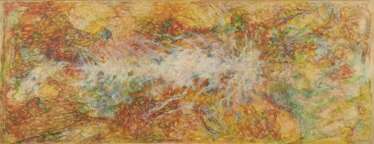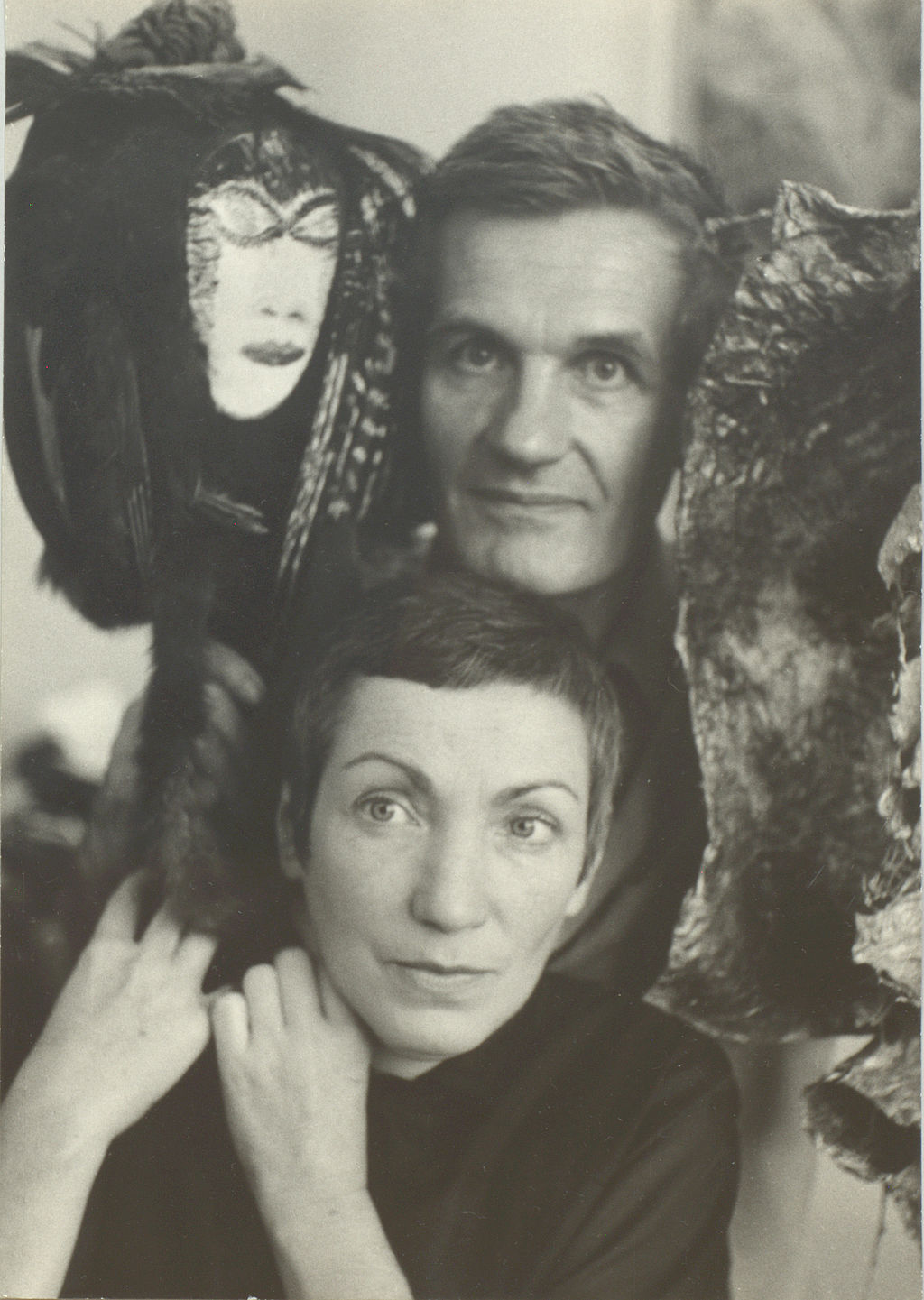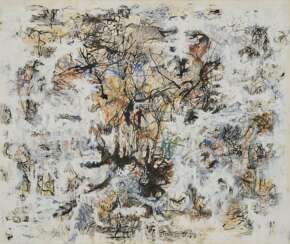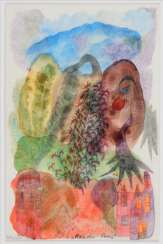
Post War — 10 Years Art Estate
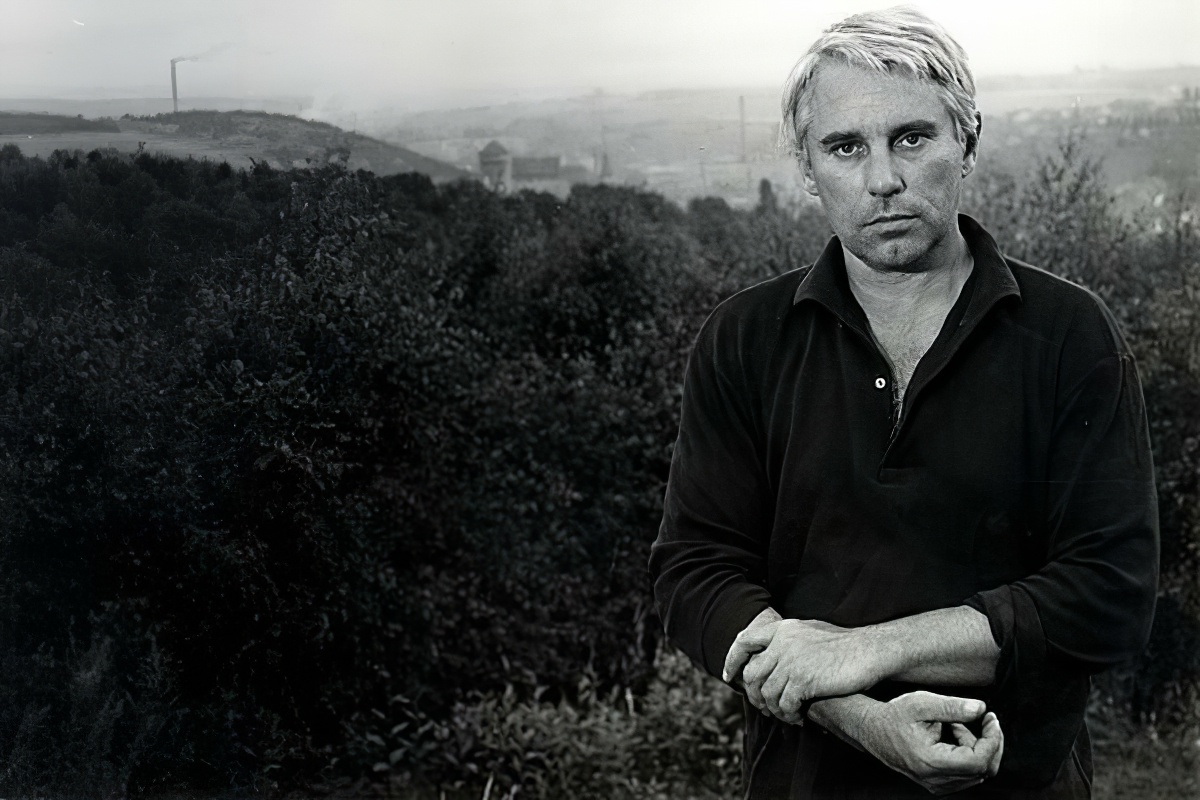
Karl Fred Dahmen is a German artist, one of the most important representatives of German post-war art and the Informel movement. In 1967 he took up the post of Professor of Fine Arts at the Munich Academy.
He painted expressive abstract pictures with a tectonic structure, and since the mid-1950s, relief paintings and collages on the damage to the local landscape caused by open-pit mining. Later in Dahmen's oeuvre, glazed object boxes appear, recounting the impressions of his daily working life.

Jean Leppien (born Kurt Leppien) was a German-French painter.
From 1929, Leppien studied at the Bauhaus Dessau with Josef Albers, Wassily Kandinsky and Paul Klee. He lived in France since 1933, from where he was deported in 1944. After the war he stayed in France as Jean Leppien, where he exhibited at the Salon des Réalités Nouvelles. Leppien is one of the most important representatives of the Geometric abstraction in France. Stylistically, he is close to painters such as Alberto Magnelli, Jean Deyrolle, Michel Seuphor, Emile Gilioli and Aurélie Nemours.

Friedrich Gräsel was a German sculptor, painter and graphic artist. He was known for his kinetic sculptures, which often incorporated light, sound, and movement.
Gräsel studied at the Academy of Fine Arts Nuremberg and later taught at the Academy of Fine Arts Munich. He began creating kinetic sculptures in the 1960s, using a wide range of materials such as metal, wood, and plastic to create dynamic, interactive works of art.
Gräsel's sculptures often feature intricate mechanisms and complex systems of movement, inviting viewers to engage with the work on a sensory level. His work frequently incorporates elements of humor and whimsy, while also exploring deeper themes related to technology, nature, and the human condition.
Gräsel exhibited his work extensively throughout Europe, including at the Venice Biennale, Documenta in Kassel, and the Museum of Modern Art in Paris. He was also awarded numerous honors and awards for his work, including the Bavarian Order of Merit in 1987 and the Art Prize of the City of Nuremberg in 1997.
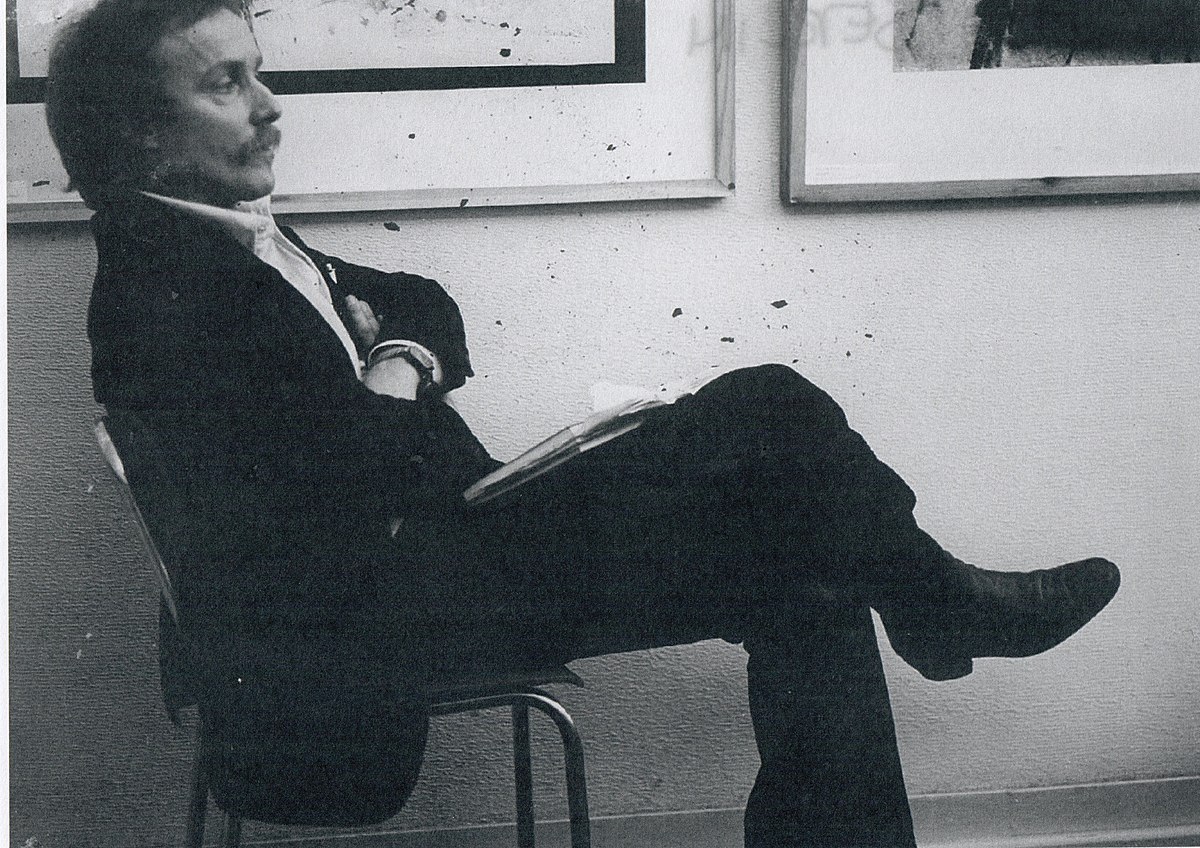
Wolfgang E. Biedermann / Wolfgang Erich Hessler, a German abstract painter and graphic artist, began his artistic journey under the guidance of Ursula Mattheuer-Neustädt. He studied at the Leipzig Academy of Visual Arts and worked as a freelance artist in Leipzig. Biedermann's artistic career spanned from 1960 to 2008, during which he developed his own technique, creating abstract paintings and paper works using various printing methods. He exhibited his artwork extensively in Germany and internationally. Biedermann also participated in happenings and performances with the artist group "Clara Mosch" and collaborated on experimental outdoor installations called "Pleinairs."

Wolfgang E. Biedermann / Wolfgang Erich Hessler, a German abstract painter and graphic artist, began his artistic journey under the guidance of Ursula Mattheuer-Neustädt. He studied at the Leipzig Academy of Visual Arts and worked as a freelance artist in Leipzig. Biedermann's artistic career spanned from 1960 to 2008, during which he developed his own technique, creating abstract paintings and paper works using various printing methods. He exhibited his artwork extensively in Germany and internationally. Biedermann also participated in happenings and performances with the artist group "Clara Mosch" and collaborated on experimental outdoor installations called "Pleinairs."

Sarah Schumann was a German painter. She concentrated on painting and in 1953 had her first solo exhibition at Zimmergalerie Franck in Frankfurt am Main. She joined the women's group "Bread and Roses". During that time she worked on three films by director Helke Sander. In 1977 she was one of the initiators of the exhibition Female Artists International 1877-1977 in Frankfurt am Main and painted large portraits of women.

Sarah Schumann was a German painter. She concentrated on painting and in 1953 had her first solo exhibition at Zimmergalerie Franck in Frankfurt am Main. She joined the women's group "Bread and Roses". During that time she worked on three films by director Helke Sander. In 1977 she was one of the initiators of the exhibition Female Artists International 1877-1977 in Frankfurt am Main and painted large portraits of women.

Karl Fred Dahmen is a German artist, one of the most important representatives of German post-war art and the Informel movement. In 1967 he took up the post of Professor of Fine Arts at the Munich Academy.
He painted expressive abstract pictures with a tectonic structure, and since the mid-1950s, relief paintings and collages on the damage to the local landscape caused by open-pit mining. Later in Dahmen's oeuvre, glazed object boxes appear, recounting the impressions of his daily working life.

Karl Fred Dahmen is a German artist, one of the most important representatives of German post-war art and the Informel movement. In 1967 he took up the post of Professor of Fine Arts at the Munich Academy.
He painted expressive abstract pictures with a tectonic structure, and since the mid-1950s, relief paintings and collages on the damage to the local landscape caused by open-pit mining. Later in Dahmen's oeuvre, glazed object boxes appear, recounting the impressions of his daily working life.

Sarah Schumann was a German painter. She concentrated on painting and in 1953 had her first solo exhibition at Zimmergalerie Franck in Frankfurt am Main. She joined the women's group "Bread and Roses". During that time she worked on three films by director Helke Sander. In 1977 she was one of the initiators of the exhibition Female Artists International 1877-1977 in Frankfurt am Main and painted large portraits of women.

Karl Fred Dahmen is a German artist, one of the most important representatives of German post-war art and the Informel movement. In 1967 he took up the post of Professor of Fine Arts at the Munich Academy.
He painted expressive abstract pictures with a tectonic structure, and since the mid-1950s, relief paintings and collages on the damage to the local landscape caused by open-pit mining. Later in Dahmen's oeuvre, glazed object boxes appear, recounting the impressions of his daily working life.

Detlev James Foth is a German painter. He studied free painting at the Düsseldorf Art Academy from 1979 to 1985. During the second semester his first solo exhibition took place at the Galeria de Arte Sala Goya in Palma de Mallorca, Spain. In 2001 he received an invitation from the Foreign Office in Berlin to hold a solo exhibition at the German Business Club in São Paulo, Brazil. He was the first German artist to have a solo exhibition at the Portuguese Cultural Institute (Instituto Camões) in Luanda, Angola. In 2012 the painter had, among other things, a solo exhibition at the Arthropologie Gallery, Cairo, Egypt. His works can be found in private collections and in public spaces. In addition to painting, Detlev Foth deals with literature and has published numerous plays, novels, short stories and poems.

Detlev James Foth is a German painter. He studied free painting at the Düsseldorf Art Academy from 1979 to 1985. During the second semester his first solo exhibition took place at the Galeria de Arte Sala Goya in Palma de Mallorca, Spain. In 2001 he received an invitation from the Foreign Office in Berlin to hold a solo exhibition at the German Business Club in São Paulo, Brazil. He was the first German artist to have a solo exhibition at the Portuguese Cultural Institute (Instituto Camões) in Luanda, Angola. In 2012 the painter had, among other things, a solo exhibition at the Arthropologie Gallery, Cairo, Egypt. His works can be found in private collections and in public spaces. In addition to painting, Detlev Foth deals with literature and has published numerous plays, novels, short stories and poems.

Sarah Schumann was a German painter. She concentrated on painting and in 1953 had her first solo exhibition at Zimmergalerie Franck in Frankfurt am Main. She joined the women's group "Bread and Roses". During that time she worked on three films by director Helke Sander. In 1977 she was one of the initiators of the exhibition Female Artists International 1877-1977 in Frankfurt am Main and painted large portraits of women.

Detlev James Foth is a German painter. He studied free painting at the Düsseldorf Art Academy from 1979 to 1985. During the second semester his first solo exhibition took place at the Galeria de Arte Sala Goya in Palma de Mallorca, Spain. In 2001 he received an invitation from the Foreign Office in Berlin to hold a solo exhibition at the German Business Club in São Paulo, Brazil. He was the first German artist to have a solo exhibition at the Portuguese Cultural Institute (Instituto Camões) in Luanda, Angola. In 2012 the painter had, among other things, a solo exhibition at the Arthropologie Gallery, Cairo, Egypt. His works can be found in private collections and in public spaces. In addition to painting, Detlev Foth deals with literature and has published numerous plays, novels, short stories and poems.

Jean Leppien (born Kurt Leppien) was a German-French painter.
From 1929, Leppien studied at the Bauhaus Dessau with Josef Albers, Wassily Kandinsky and Paul Klee. He lived in France since 1933, from where he was deported in 1944. After the war he stayed in France as Jean Leppien, where he exhibited at the Salon des Réalités Nouvelles. Leppien is one of the most important representatives of the Geometric abstraction in France. Stylistically, he is close to painters such as Alberto Magnelli, Jean Deyrolle, Michel Seuphor, Emile Gilioli and Aurélie Nemours.

Karl Fred Dahmen is a German artist, one of the most important representatives of German post-war art and the Informel movement. In 1967 he took up the post of Professor of Fine Arts at the Munich Academy.
He painted expressive abstract pictures with a tectonic structure, and since the mid-1950s, relief paintings and collages on the damage to the local landscape caused by open-pit mining. Later in Dahmen's oeuvre, glazed object boxes appear, recounting the impressions of his daily working life.
























